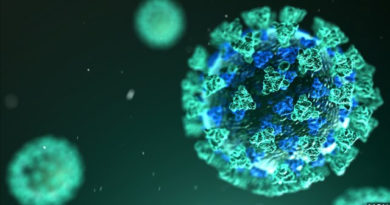Here’s How Someone With No Symptoms May Spread Coronavirus

COVID-19 transmission: Experts explain how coronavirus spreads from asymptomatic people
Highlights
- More research is needed on how asymptomatic patients spread the virus
- A person can test positive one to three days before getting symptoms
- A comprehensive approach can help in stopping the virus
Coronavirus transmission: We all know that COVID-19 spreads from others who have the virus. A person catches the virus through droplets expelled when someone infected with coronavirus coughs, sneezes or speaks. But, what happens in case of asymptomatic COVID-19 patients? Can they spread the virus? The World Health Organization, in a recently released video, answers similar questions related to COVID-19 transmission.
COVID-19 transmission: What you need to know
Dr Maria van Kerkhove, COVID-19 technical lead, says that the majority of transmission that is known till now is that people who have symptoms transmit the virus to other people through infectious droplets. “But, there are a subset of people of don’t develop symptoms. We still don’t have the answer to understand how many people don’t have symptoms,” she says.
Also read: Fabric Face Mask Vs Medical Mask: Who Should Wear What And Where
What does it mean to be asymptomatic or pre-symptomatic?
Asymptomatic COVID-19 positive means a person has been tested positive but has no symptoms, and does not go on to develop symptoms, says Dr Kerkhove in the video. “A number of people are reported asymptomatic, actually may have mild disease. They may go on to develop symptoms. They may not quite register that they are sick. They can feel just a little bit unwell or under the weather, or fatigued. Some of those individuals we would classify as pre-symptomatic,” she adds. Pre-symptomatic COVID-19 positive means that a person has not yet developed symptoms.
Is it possible to spread the infection if there are no symptoms?
Viral shedding studies for some of the lab work show that there are people who are infected with COVID-19 can test positive one to three days before they develop symptoms. “This is something that has been known for sometime now. We need to better understand what proportion is that contributing to transmission. This is one of the major unknowns,” says Dr Kerkhove.

People who are infected with COVID-19 can test positive one to three days before they develop symptoms
Photo Credit: iStock
Also read: COVID-19 Prevention: Why Cloth Face Masks Should Have 3 Layers Of Fabric
How asymptomatic people can spread the virus?
Explaining how asymptomatic people can spread the virus, Dr Mike Ryan, EXD, WHO Health Emergencies Programme says, “For instance, if someone is in a nightclub, trying to talk to someone, and its too noisy, and you are too close to them, it’s like you are projecting your voice at someone. In this situation, if the virus is present your upper respiratory mucosa, then there’s every likelihood that you can project the virus.”
Many people with COVID-19 experience only mild symptoms, especially in early stages of the disease. “It is possible to catch COVID-19 from someone who has just a mild cough and does not feel ill. Some reports have indicated that people with no symptoms can transmit the virus. It is not yet known how often it happens. WHO is assessing ongoing research on the topic,” states the WHO website.
What is the situation right now?
The last couple of days have been the highest number of daily cases in the world. So, in terms of pandemic generation, we are still very much on the up on the upward climb on this mountain, Dr Ryan adds. “As some countries have shown, if you go at this with a comprehensive approach in a very systematic way, then there is enough stopability for the virus.”
He goes on to add that as a society, we have some choices to make. “If we can identify cases and their contacts, and we ask those contacts to quarantine themselves, we support them in that quarantine, then that can be a very successful way of both stopping the disease and avoiding large-scale lockdowns in future,” Dr Ryan adds. Watch the full video below.
Also read: New WHO Guidelines For Wearing Face Masks
Disclaimer: This content including advice provides generic information only. It is in no way a substitute for qualified medical opinion. Always consult a specialist or your own doctor for more information. NDTV does not claim responsibility for this information.




